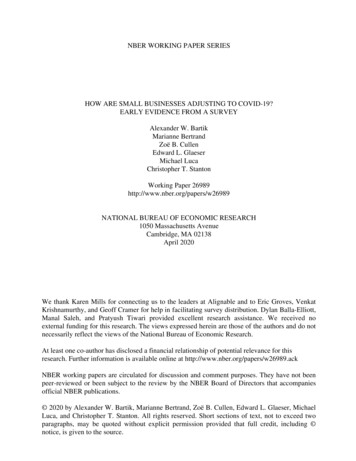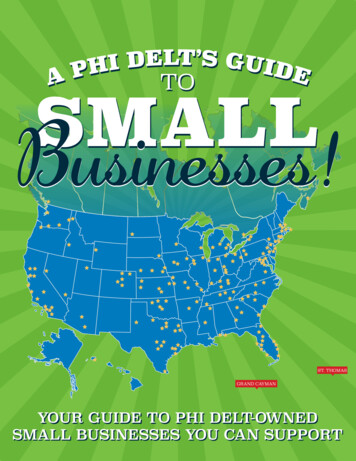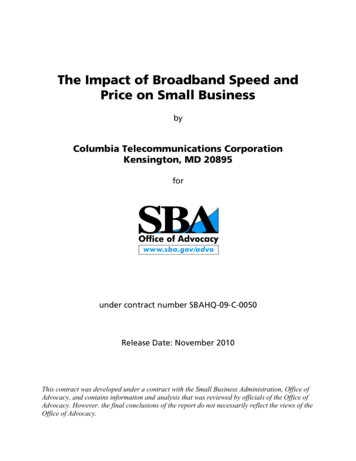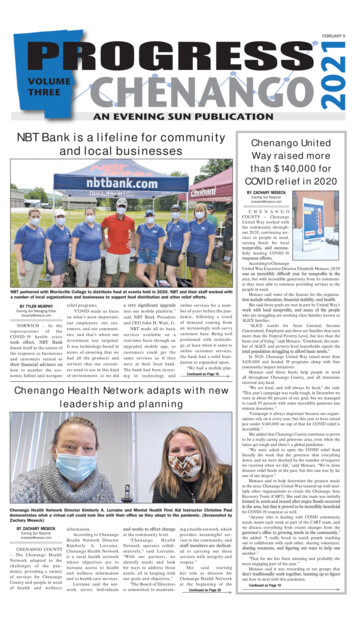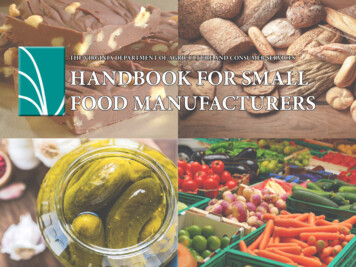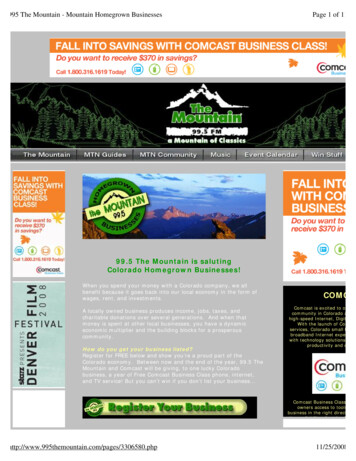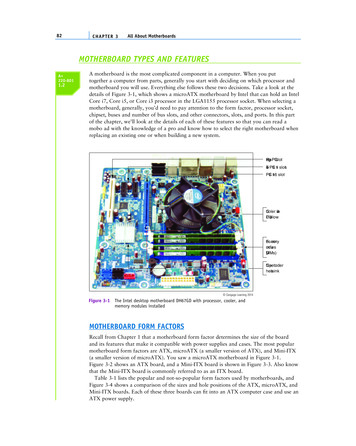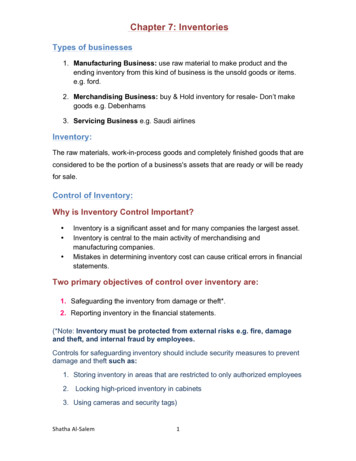
Transcription
Chapter 7: InventoriesTypes of businesses1. Manufacturing Business: use raw material to make product and theending inventory from this kind of business is the unsold goods or items.e.g. ford.2. Merchandising Business: buy & Hold inventory for resale- Don’t makegoods e.g. Debenhams3. Servicing Business e.g. Saudi airlinesInventory:The raw materials, work-in-process goods and completely finished goods that areconsidered to be the portion of a business's assets that are ready or will be readyfor sale.Control of Inventory:Why is Inventory Control Important? Inventory is a significant asset and for many companies the largest asset.Inventory is central to the main activity of merchandising andmanufacturing companies.Mistakes in determining inventory cost can cause critical errors in financialstatements.Two primary objectives of control over inventory are:1. Safeguarding the inventory from damage or theft*.2. Reporting inventory in the financial statements.(*Note: Inventory must be protected from external risks e.g. fire, damageand theft, and internal fraud by employees.Controls for safeguarding inventory should include security measures to preventdamage and theft such as:1. Storing inventory in areas that are restricted to only authorized employees2. Locking high-priced inventory in cabinets3. Using cameras and security tags)ShathaAl- ‐Salem1
Chapter 7: InventoriesExample for safeguarding inventoryControls for safeguarding inventory begin as soon as the inventory isordered the following documents are often used for inventory control: Purchase order (from an approved vendor/seller) Receiving report:(when receiving the inventory) Vendor’s invoiceReporting Inventory:A physical inventory or count of inventory should be taken near year-end to makesure that the quantity of inventory reported in the financial statements isaccurate.Inventory cost flow assumptions:An accounting issue arises when identical unites of goods are acquired atdifferent unit costs during a period. In such cases, when an item is sold, it’snecessary to determine its cost using a cost flow Assumptions and method.Three common cost flow assumptions and methods are:1. First-in, first out (FIFO): the first units purchased are assumed to be sold,and the ending inventory is made up of the most recent purchases2. Last-in, first out (LIFO): the last units purchased are assumed to be soldfirst, and the ending inventory is made up of the first units purchased.3. Average cost: the cost of the units sold and in ending inventory is anaverage of the purchase costs.ShathaAl- ‐Salem2
Chapter 7: InventoriesTo illustrate, assume that three identical unite of merchandise arepurchased during May, as follows:Assume that one unit is sold on May 30 for 20. Depending uponwhich unit was sold, the gross profit varies from 11 to 6 asshown below:Ø Under the specific identification inventory: cost flow method,the unit sold is identified with a specific purchase. Automobile dealerships,jewelry stores, and art galleries normally use this method.*Two inventory systems are used: 1.Perpetual, 2. PeriodicInventory Costing Methods under the perpetualinventory system:For purposes of illustration, the data for Item 127B are used, as shown below.We will examine the perpetual inventory system first.ShathaAl- ‐Salem3
Chapter 7: InventoriesFirst-In, First-Out MethodLast-In, First-Out MethodShathaAl- ‐Salem4
Chapter 7: InventoriesAverage Cost Method:Ø When the average cost method is used in a perpetual system, an averageunit cost for each item is computed each time a purchase is made.Ø This unit cost is then used to determine the cost of each sale until anotherpurchase is made and a new average is computed. This averagingtechnique is called a moving average.Average cost-Perpetual Inventory AccountItem 127BPurchasesDateJan. 1410Qty.UnitCostCost of Mdse. SoldTotalCostQty.UnitCostTotalCostInventory Totals 1802122168020.72200 3880150130 264320.7103621.571503236 3236Reporting Merchandise Inventory in the financialstatementsØ Cost is the primary basis for valuing and reporting inventories in the financialstatements. However, inventory may be valued at other than cost in thefollowing cases: The cost of replacing items in inventory is below the recorded cost. The inventory cannot be sold at normal prices due to imperfections,style changes, or other causes.Valuation at Lower of Cost or MarketIf the cost of replacing inventory is lower than its recorded purchase cost, thelower-of-cost-or-market (LCM) method is used to value the inventory.Cost and replacement cost can be determined for the following: Each item in the inventory.Each major class or category of inventory.Total inventory as a whole.ShathaAl- ‐Salem5
Chapter 7: InventoriesExample Exercise 7-5: page 325ItemQuantityUnit costUnit market priceA400 10.25 ion at Net Realizable ValueMerchandise that is out of date, spoiled, or damaged should be written down toits net realizable value. This is the estimated selling price less any direct costs ofdisposal, such as sales commissions or special advertising.Example: Assume the following data about an item of damagedmerchandiseOriginal cost 1,000Estimated selling price800Selling expenses150The merchandise should be valued at its net realizable value of 650Net Realizable Value 800 – 150 650Merchandise Inventory on the Balance Sheet Merchandise inventory is usually presented in the Current Assetssection of the balance sheet, following receivables. The method of determining the cost of the inventory (FIFO, LIFO, orweighted average) and the method of valuing the inventory (cost or thelower of cost or market) should be shown.ShathaAl- ‐Salem6
Chapter 7: InventoriesIllustrative Problem Page 336 – 337PR 7-1A/B – 7-2A/B – 7-3A/B Page 339 - PR 7-5B – Page 340EX 7-3, EX 7-4ShathaAl- ‐Salem7
Merchandise Inventory on the Balance Sheet Merchandise inventory is usually presented in the Current Assets section of the balance sheet, following receivables. The method of determining the cost of the inventory (FIFO, LIFO, or weighted average) and the method of valuing the inventory


